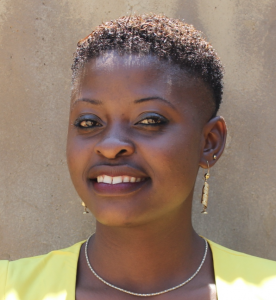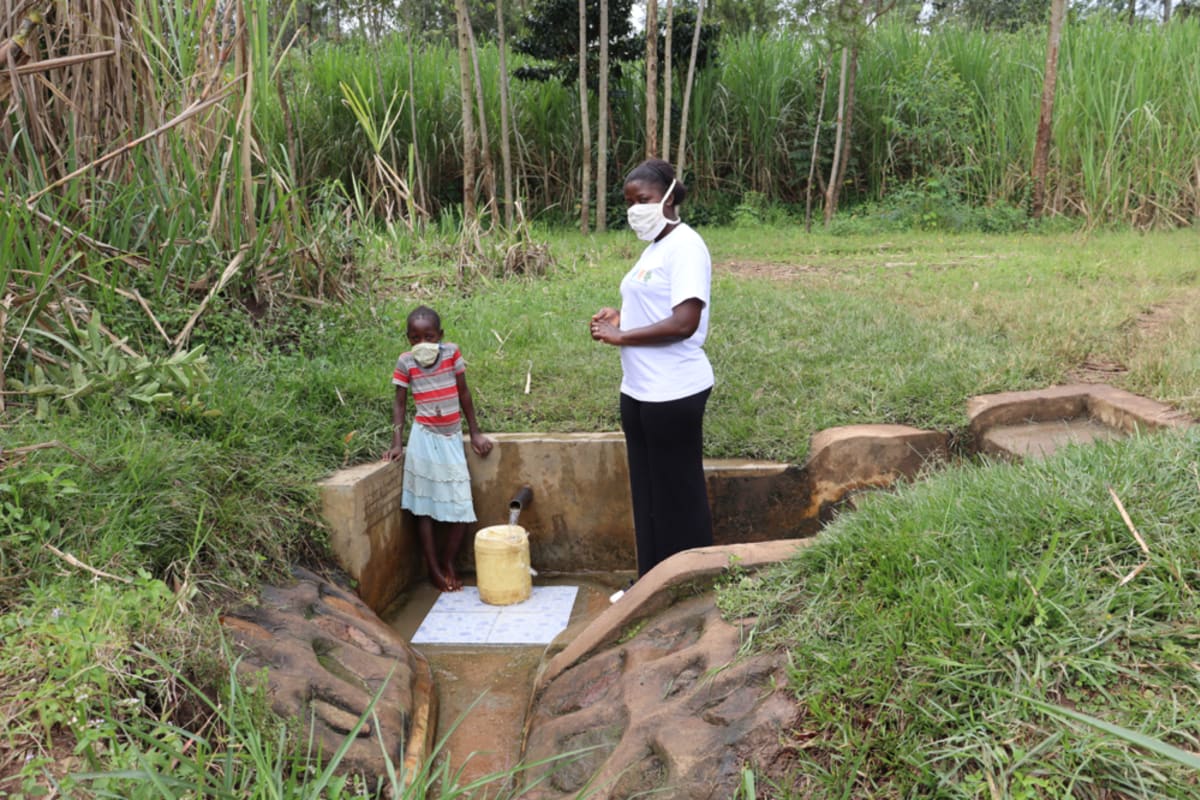The weather was very good on the day of our visit to Burachu B. The sunny and dry weather made for safely-traveled dirt roads. Burachu is a rural area where people are very busy with their daily work in the garden, farm, or home. The area is green from all of the planted farmland. Most people have also planted their own indigenous trees around their homesteads. We found farmers taking advantage of the hot and dry weather by putting their recently-harvested maize out to dry.
Those who do not have their own farms do casual labor for other people. These laborers can make anywhere from 100 to 300 shillings depending on the type of job.
An average day begins with house chores. As children are getting ready for school, women make sure the house and its surroundings are tidy and enough water is collected. All this work is done before midday so they can afford time helping in the garden or farm.
The water collected each day is dirty and dangerous for drinking. Several families draw their water from Namukhuvichi Spring, which is an open water source that has pooled above ground. We were sorrowed to find an expecting mother scooping water from the spring to take back home and use.
Water from this source is collected using a small container that bails water to fill a larger jerrycan. This is done continuously until the container is full.
"Having scarcity of safe water has brought me issues with my neighbor when my child had a fight with her's. This is because one child after fetching water threw a stone in the water and it got dirty. They began to fight, causing injuries to themselves, and this made me conflict with my neighbor who did not understand. She took her daughter's side and because of this we do not talk," said Mrs. Edith Hussein.
"In my thoughts, I wished our spring could be protected, then all this could not arise."
The younger children complain of constant stomachaches that are attributed to dirty water from Namukhuvichi Spring.
What we can do:
From the observations made during visits and interviews, we found the community members here don't know a lot about good sanitation. Livestock and poultry are let inside the home. Other families are missing important tools like clotheslines and dish racks that will dry their belongings up off the ground.
Training
Community members will attend hygiene and sanitation training for at least two days. This training will ensure participants have the knowledge they need about healthy practices and their importance. The facilitator plans to use PHAST (Participatory Hygiene and Sanitation Transformation), CLTS (Community-Led Total Sanitation), ABCD (Asset-Based Community Development), group discussions, handouts, and demonstrations at the spring. One of the most important topics we plan to cover is the handling, storage, and treatment of water. Having a clean water source will be extremely helpful, but it is useless if water gets contaminated by the time it’s consumed.
Training will also result in the formation of a committee that will oversee operations and maintenance at the spring. They will enforce proper behavior around the spring and delegate tasks that will help preserve the site, such as building a fence and digging proper drainage. The fence will keep out destructive animals, and the drainage will keep the area’s mosquito population at a minimum.
Sanitation Platforms
The latrines in this community are not very stable - when you look from the outside many of them have leaning walls. The insides are cleaned with ash on a weekly basis whereby the ash is applied around the hole and the rest is poured inside. This ash keeps the odor down and flies away.
However, only a little over half of the families living here have their own pit latrine. The families without them often share with their neighbors.
On the final day of training, participants will select the five families that will most benefit from new latrine floors.
Training will also inform the community and selected families on what they need to contribute to make this project a success. They must mobilize locally available materials, such as bricks, clean sand, hardcore, and ballast. The five families chosen for sanitation platforms must prepare by sinking a pit for the sanitation platforms to be placed over. All community members must work together to make sure that accommodations and food are always provided for the work teams.
Spring Protection
Protecting the spring will ensure that the water is safe, adequate and secure. Construction will keep surface runoff and other contaminants out of the water. With the community’s high involvement in the process, there should be a good sense of responsibility and ownership for the new clean water source.
Fetching water is predominantly a female role, done by both women and young girls. Protecting the spring and offering training and support will, therefore, help empower the female members of the community by giving them more time and efforts to engage and invest in income-generating activities.

 Protected Spring
Protected Spring
 Rehabilitation Project
Rehabilitation Project












































